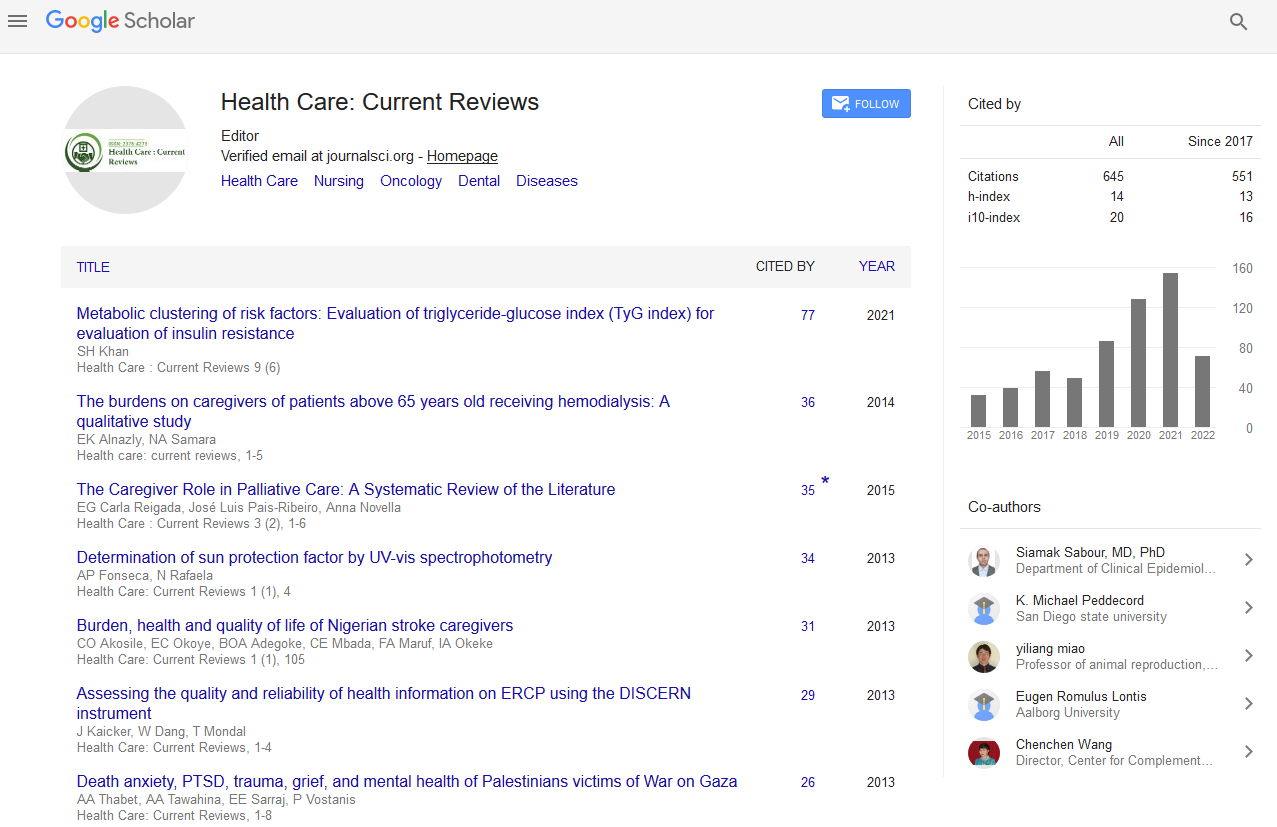PMC/PubMed Indexed Articles
Indexed In
- Open J Gate
- Academic Keys
- RefSeek
- Hamdard University
- EBSCO A-Z
- Publons
- Geneva Foundation for Medical Education and Research
- Google Scholar
Useful Links
Share This Page
Journal Flyer

Open Access Journals
- Agri and Aquaculture
- Biochemistry
- Bioinformatics & Systems Biology
- Business & Management
- Chemistry
- Clinical Sciences
- Engineering
- Food & Nutrition
- General Science
- Genetics & Molecular Biology
- Immunology & Microbiology
- Medical Sciences
- Neuroscience & Psychology
- Nursing & Health Care
- Pharmaceutical Sciences
Abstract
Is Transvaginal Sonograpy Useful In Women's Health Care Programs?
Abstract Objective: The role and efficacy of trans-vaginal ultra-sonography (TVS) in women�s health care programs were evaluated. 1.2. Methods and Materials: The subjects were 1,000 consecutive women who received a health care program with TVS. Gynecologic abnormalities detected by TVS were compared with those from a bimanual pelvic exam. 1.3. Results: 1) The incidence of Gynecologic abnormalities found by TVS was 24.5%, whereas that by pelvic exam was 13.6%. 2) The incidence of detected uterine myoma by TVS was 20.4%, whereas that by the exam was 8.3%. When compared with myoma size, myomas of < 2cm, 2-3cm, 3-5cm, 5-7cg and ≧7cm in diameter were distributed in 26.3%, 22.0%, 27.3%, 13.2% and 11.2%, respectively. Among those found by TVS, 1.9%, 15.6%, 46.4%, 96.3% and 100% were detectable by pelvic exam, respectively. 3) Incidences of both ovaries visible, right ovary and left ovary, and both ovaries invisible by TVS were 26.0%, 15.4%, 14.7% and 44.1%, respectively. When compared with the total number of ovaries, 41% of ovaries were only visualized by TVS. 4) Ovarian tumors were detected in 2.0% by TVS, whereas in 1.0% by pelvic exam. 1.4. Conclusions: TVS is more sensitive to detect Gynecologic abnormalities than pelvic exams. The high sensitivity of TVS allows it to find smaller myoma nodules and thus increases the number of gynecologically abnormal women. In contrast, ovaries are not visualized in the majority of cases.


